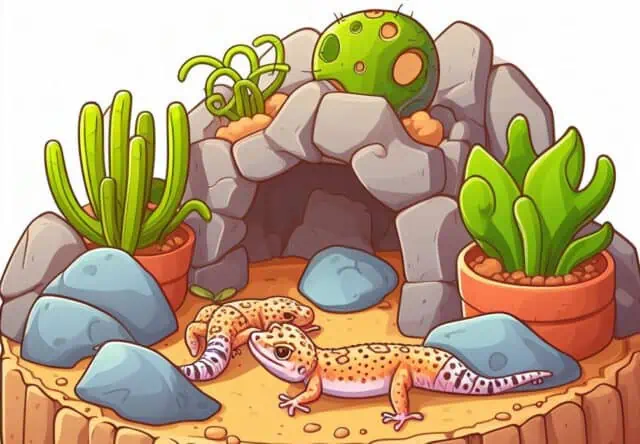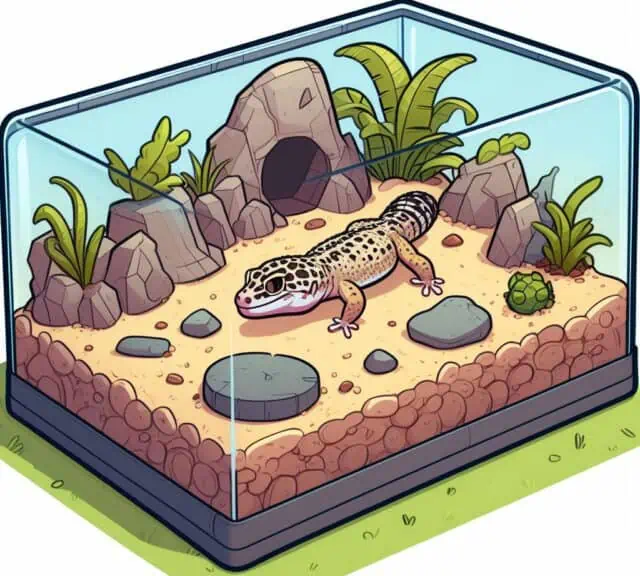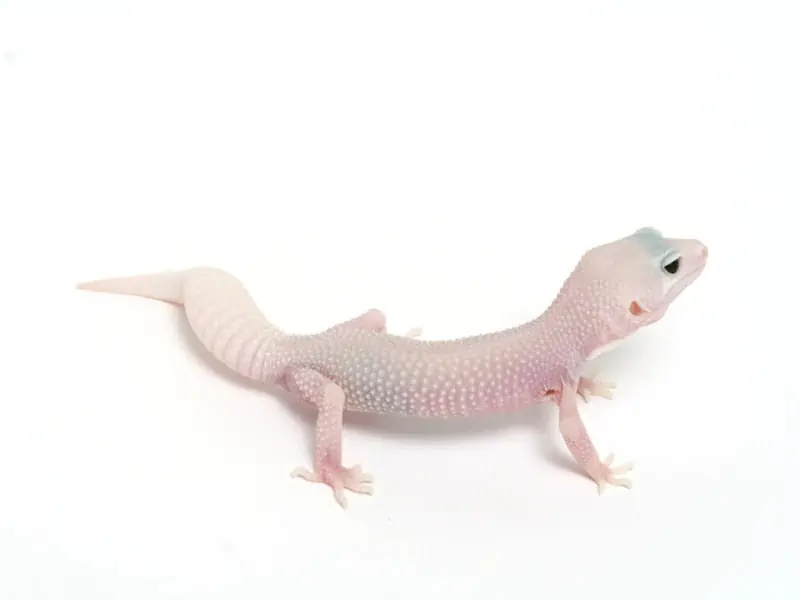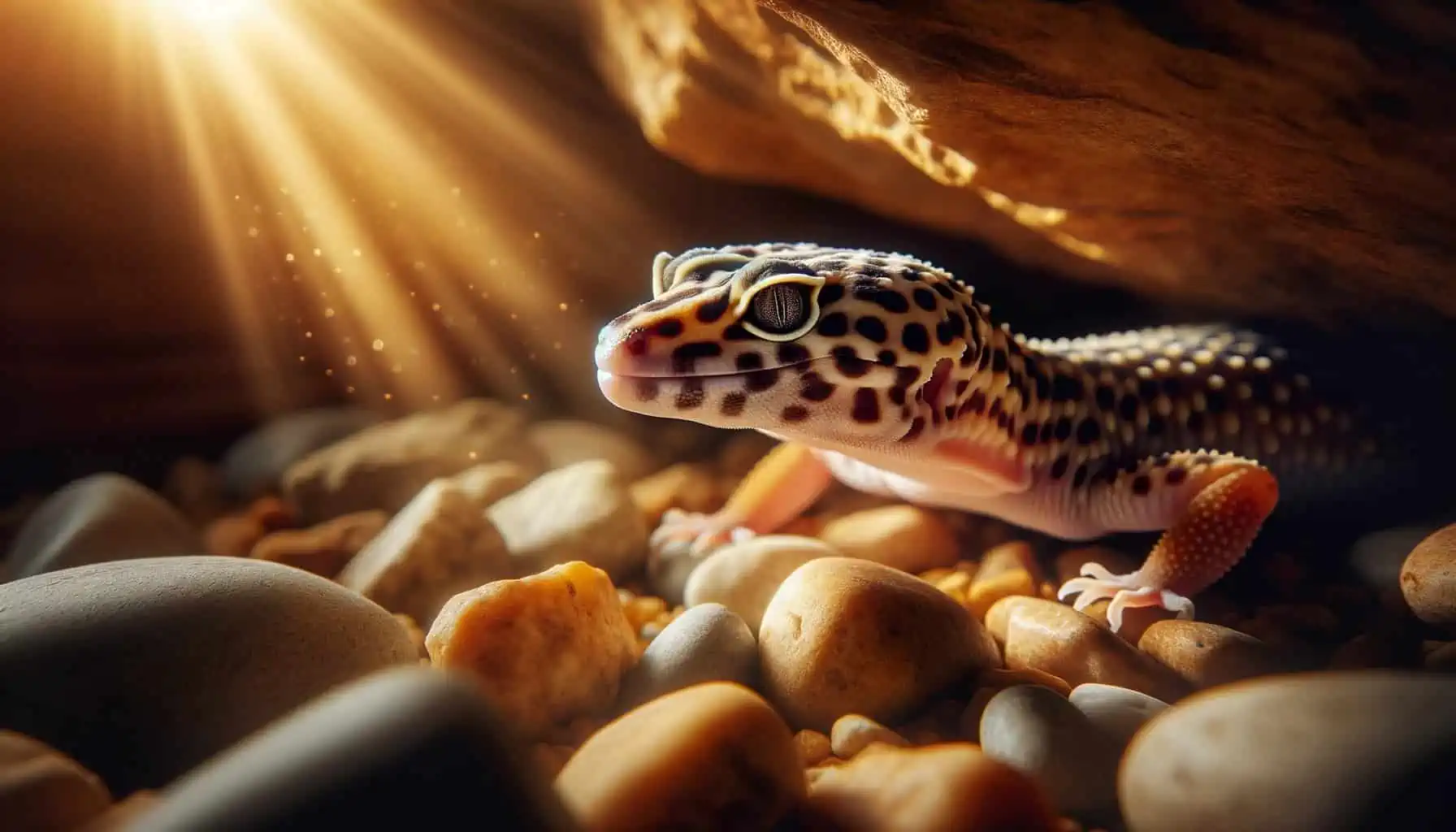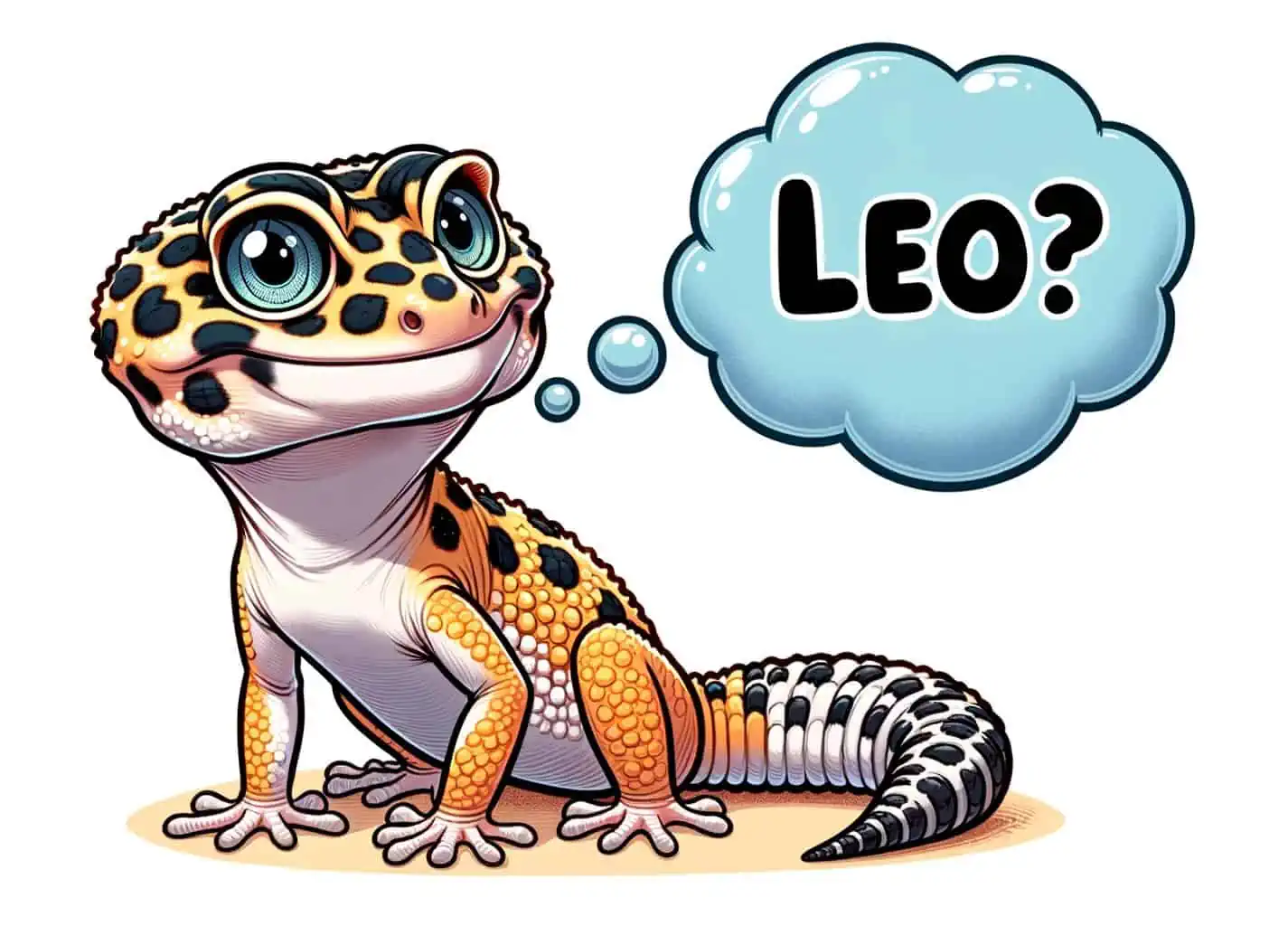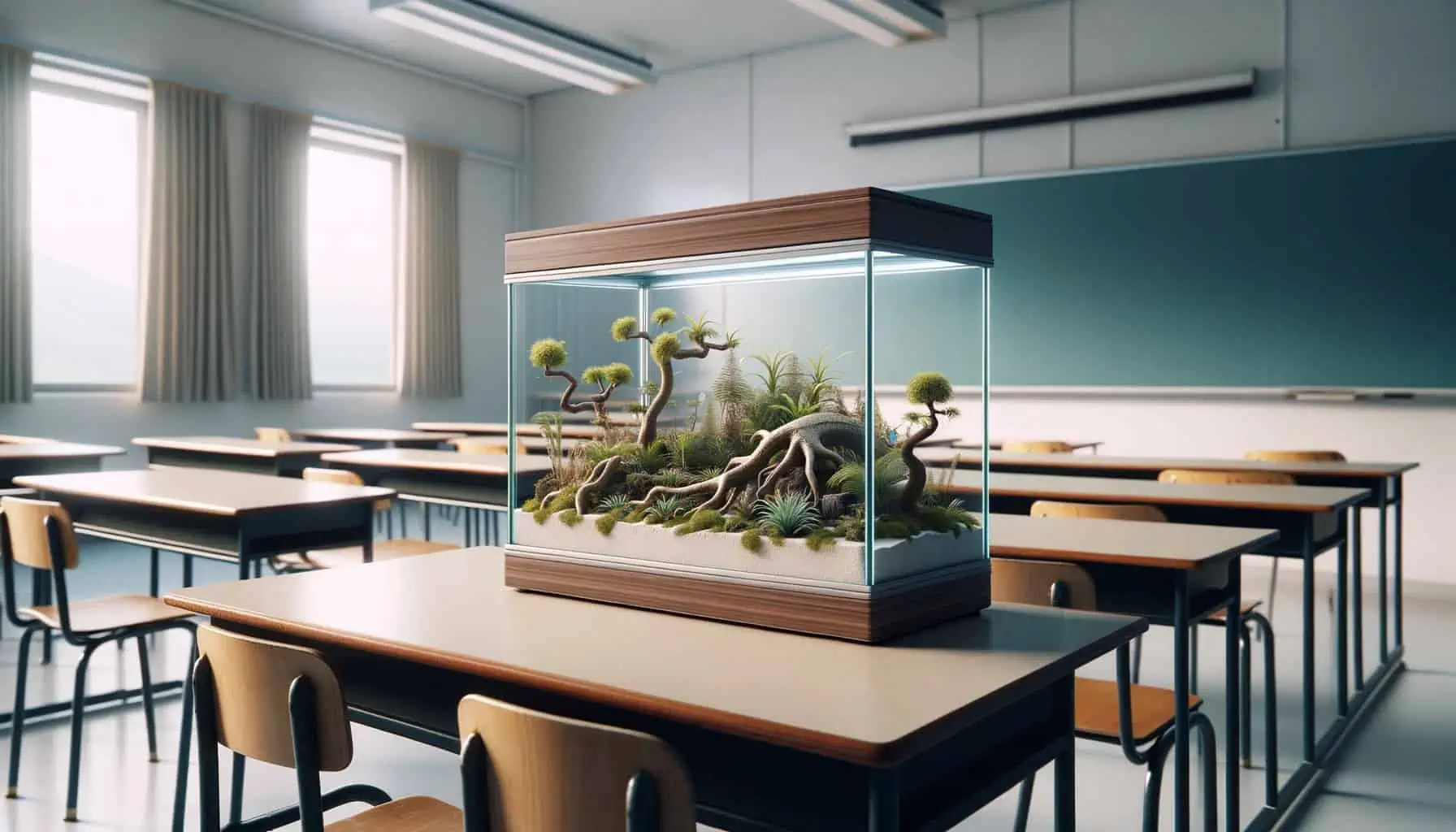Setting up a suitable tank for your leopard gecko is paramount to its well-being. From the outset, you’ll need to pinpoint the optimal enclosure size tailored to accommodate the growth and activity of your gecko. However, tank dimensions are just one facet of the equation.
As you delve deeper into creating a habitat, you’ll discover a medley of requirements to fulfill—from selecting the right cage materials to ensuring adequate ventilation, proper access, and designing a visually appealing enclosure.
Tank Size Matters: For a single leopard gecko, a tank of at least 20 gallons is ideal, ensuring enough space for movement, hideaways, and thermal regulation.
Material Choices: While glass tanks are praised for visibility and chemical stability, consider lightweight plastic alternatives or affordable wooden terrariums with a waterproof coating.
Ventilation is Crucial: Ensure your tank has both passive and active ventilation. Mesh lids are common and effective for maintaining a healthy airflow.
Hideaways & Decor: Provide at least two hideouts in the tank—one in the hot spot and another in the cooler area. This aids geckos in body temperature regulation.
Plant Decor: While most plants struggle in gecko habitats due to light and moisture constraints, air plants are a viable, low-maintenance option. For an effortless touch of green, consider artificial plants, but remember to clean them regularly.
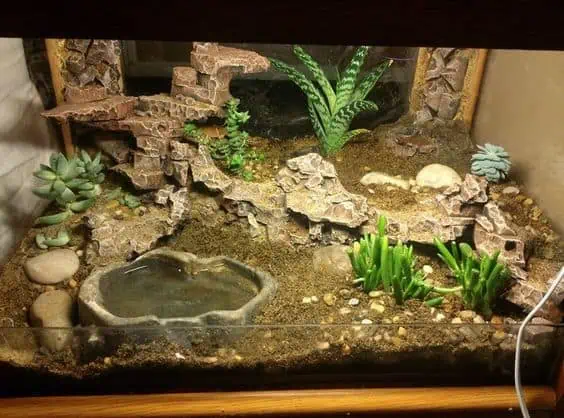
Leopard Gecko Enclosure: Mimic Their Original Environment
These geckos are scientifically known as Eublepharis macularius and they are common in desert regions of Iran, Afghanistan, Pakistan, Nepal, and India. They can grow up to 6.5-8 inches long and live up to 15 years in the wild and up to 20 years in captivity.
They are native to desert regions and dry grasslands, which means you’ll need to mimic the same environment in their cage to make them comfortable. Despite the fact that they live in desert areas, they avoid places where the primary substrate is sand.
Leopard Geckos live in arid and semi-arid areas with sparse vegetation and sandy soils or clay. But they also love rocky habitats as they can use crevices as shelter. They remain hidden during the day and only come looking for prey at night.
When you set up a cage for your new Leopard Gecko you will need to be very careful about the temperature and humidity. They prefer hotter environments and a lower level of humidity. Not extremely dry but above 25% and below 40% is perfect.
These creatures are easy to maintain and can become great pets for even the most clueless reptile owner. Their cage is a pleasure to set up and easy to clean and the gecko makes lots of interesting movements that are great to admire.
Leopard Gecko Cage Setup
The best enclosures for Leopard Geckos are long and shallow. You can house up to 4 leopard geckos together so the size of the tank depends on how many geckos you have or plan on getting. It’s very important to prepare a cage that fits the needs of your little companion.
Sometimes, reptile owners would start with a small enclosure for baby reptiles, then move them to a bigger place once they’re fully grown. But this is not necessary with the Leopard Gecko. You can start with a bigger tank and avoid all the mess that comes with having to move them from one enclosure to another.
It’s very important to find a cage that is properly ventilated but doesn’t give the gecko a chance to escape. A loose lizard can be dangerous for smaller kids and the lizard itself. When it’s frightened it can lose its tail which moves violently for minutes. This will cause a very unpleasant experience for the gecko.
Since these lizards are so popular as pets, you can find everything you need in any pet shop near you. If not, you can always improvise until you can get something much better and more appropriate for a lizard enclosure.
What Size Tank Does a Leopard Gecko Need?
You’ll need to do your best to recreate the gecko’s natural habitat in your home. This includes investing in a spacious tank that can fit everything it needs. If you can’t fit an appropriate-sized cage for your Leopard Gecko in your home, maybe you should consider another pet. These creatures need a little bit of space as well.
Generally, you need to start with a 10-gallon tank in which you can recreate the lizard’s original habitat. If you have space, you can invest in a tank that’s 10 gallons bigger for each lizard. But if you’re tight on space, 5 gallons per gecko is acceptable as well. But always start with a 10-gallon tank.
You will be able to house up to 3 maybe 4 Lizard Geckos together. But it’s crucial to keep in mind that no two males should be kept together. They will start fighting over anything, including territory, and some of these fights can end only when one of the geckos is dead.
An appropriate habitat for these lizards needs to include at least one hiding spot for each of the lizards. This helps them sleep comfier and feel a lot safer. It’s recommended that you provide two hidings for each Leopard Geckos, one near the heat source and one on the cooler side of the cage.
Terrariums: Designed primarily for housing terrestrial plants and animals. While they can be used for both arid and humid environments, their main function is to recreate a land habitat. They often have ventilation in both the lid and sides and might be front-opening, allowing for easier access to animals and plants. They can also feature built-in systems for lighting or heating.
Vivariums: A vivarium is an enclosure for raising animals or plants for observation or research. In a broader sense, it can refer to any such enclosure, though it often implies a more naturalistic environment. Vivariums can be specialized to replicate desert, rainforest, or other habitats.
Bioactive Enclosure: A bioactive enclosure is a type of habitat designed to mimic the natural ecosystem of the animal being housed. It is created in such a way that microorganisms and detritivores (like certain insects and worms) live within the substrate and actively break down waste materials, simulating a natural and self-sustaining environment.
Tank Material
Choosing the right tank material is a crucial first step when setting up a habitat for your leopard gecko. Let’s explore the three primary options: glass tanks, plastic tanks, and wooden terrariums.
Glass Tanks for Leopard Geckos
Glass tanks have long stood as a gold standard in the world of leopard gecko habitats, and for several good reasons. Let’s delve into the benefits, considerations, and potential drawbacks of using glass tanks for these captivating reptiles.
To begin with, the high visibility provided by glass tanks is unmatched. This clarity ensures that owners can easily observe and enjoy every movement and nuance of their gecko’s behavior. Watching your pet explore, hunt, and relax in its habitat becomes a visual treat, enhancing the overall experience of pet ownership.
Another significant advantage of glass tanks is their ease of cleaning. Glass surfaces are smooth and non-porous, allowing for quick and efficient cleaning. This ensures that you can maintain a hygienic environment for your leopard gecko with minimal effort.
Furthermore, the chemical stability of glass is a noteworthy benefit. Unlike certain plastics or treated woods, glass does not leach chemicals into the environment. This means that your gecko won’t be exposed to potentially harmful substances, ensuring a safer habitat.
However, every rose has its thorn. The primary downside to glass tanks is their weight. They are considerably heavier than plastic or wooden counterparts, making them less portable and more challenging to relocate.
Moreover, there’s the ever-present risk of breaking. Accidental drops or harsh impacts can shatter glass tanks, posing risks to both the gecko and the owner.
For those on a budget or looking for a cost-effective option, considering second-hand tanks might be a wise choice. Many reptile enthusiasts upgrade or change their setups over time, offering their used tanks at reduced prices.
While this can be an excellent way to save money, it’s crucial to thoroughly inspect any second-hand tank for damages or issues that might compromise the safety or comfort of your gecko.
Plastic Tanks for Leopard Geckos
When it comes to housing leopard geckos, plastic tanks are carving a niche for themselves, emerging as a viable alternative to traditional glass tanks. There are a plethora of reasons behind their burgeoning popularity, and in this section, we’ll break down the pros and cons of these modern terrariums.
First and foremost, the durability of plastic tanks is commendable. Unlike glass tanks that can break upon impact, plastic tanks, especially those made of robust materials like PVC or ABS plastic, can withstand a lot more wear and tear. This resilience ensures a longer lifespan for the tank, making it a potentially more sustainable choice in the long run.
Another salient feature of plastic tanks is their adaptability. They can be customized to suit specific requirements, making it easier for gecko enthusiasts to design their ideal habitat. Whether it’s incorporating unique hideaways or optimizing the space for better movement, plastic tanks offer a level of flexibility that’s hard to find in other materials.
Weight is another area where plastic tanks shine. Their lighter weight compared to glass tanks means that relocating or rearranging your leopard gecko’s habitat becomes a breeze. For those who frequently move or like to switch things up often, plastic tanks can be a game-changer.
In terms of construction, plastic tanks come in two primary forms. Some are crafted from separate plastic sheets that are then assembled together, while others are one-piece molded terrariums. The latter often provides a seamless environment for the gecko and is generally more aesthetically pleasing.
While plastic tanks can sometimes be pricier than their glass counterparts, many are still reasonably priced for leopard gecko owners, striking a balance between cost and quality.
However, like all things, plastic tanks are not without their drawbacks. Some cheaper variants tend to be opaque on most sides, limiting visibility and potentially making the environment feel more confined for the gecko.
Moreover, plastic surfaces, especially in less expensive models, are more prone to scratching. Over time, these scratches can accumulate, diminishing the tank’s visual appeal and potentially hindering your view of your pet.
Plastic Tubs: Some hobbyists use plastic storage containers as makeshift leopard gecko homes. These can be modified with ventilation holes and can be surprisingly effective, especially for breeders or those with multiple animals. They’re lightweight and relatively inexpensive but may lack the aesthetic appeal of traditional tanks.
Wooden Terrariums for Leopard Geckos
Leopard gecko enthusiasts seeking a blend of tradition, functionality, and creativity often turn their gaze towards wooden terrariums. These enclosures, imbued with a rustic charm, not only serve as apt habitats for the geckos but also stand as testament to the owner’s craftsmanship, especially if they’re of the DIY ilk. Their popularity, in large part, stems from their affordability and the ease of DIY construction.
A common approach to creating a wooden terrarium is using a plywood enclosure. Plywood is sturdy, relatively easy to work with, and provides ample insulation. For those looking to repurpose existing furniture, a bookshelf setup can be an innovative choice. Transforming a bookshelf into a terrarium can be both cost-effective and space-efficient, adding an element of eco-friendliness by reusing materials.
However, while wooden terrariums have their allure, they also present certain challenges. The most prominent is the porous nature of wood. Wood, by its very nature, absorbs moisture, making it susceptible to rotting and mold. This not only poses a threat to the enclosure’s longevity but can also create an unhealthy environment for the gecko.
To counteract this, a waterproof coating becomes essential. This coating acts as a barrier, preventing moisture from seeping into the wood. However, one needs to tread with caution here. It’s of utmost importance to ensure that the waterproofing substance is non-toxic to the gecko. Once applied, ample time should be allowed for the coating to cure completely before introducing the gecko, ensuring that no harmful fumes linger.
Tank Ventilation for Leopard Geckos
Tank ventilation is a crucial aspect of setting up a habitat for leopard geckos. Proper ventilation ensures a fresh supply of air, helping to prevent the build-up of harmful bacteria and fungi. It also plays a role in maintaining a balanced humidity level, which is vital for the gecko’s health.
There are two primary types of ventilation: passive and active.
Passive ventilation relies on natural airflow. This can be achieved by using mesh lids on top of the tank. The gaps in the mesh allow air to circulate in and out freely, ensuring that the gecko receives fresh air without any external aid.
Active ventilation, on the other hand, involves the use of devices, like ventilators, to force air in or out of the tank. This method is more controlled and can be adjusted based on the specific needs of the habitat.
Tank Access: Front Opening vs Top Lid
When it comes to setting up a habitat for leopard geckos, considering how you’ll access the tank is essential. The two main mechanisms for accessing a tank are lid opening from above (like an aquarium) and front opening with a sliding glass panel.
Front opening tanks have become increasingly popular in recent times, and for good reason. Firstly, they provide easier access for maintenance tasks, such as cleaning, feeding, or handling the gecko. This ease of access can be especially helpful for those who frequently interact with their pets or need to make regular habitat adjustments. Additionally, accessing the tank from the front may result in less stress for the gecko, as overhead movements can sometimes be perceived as threats by these creatures.
However, there are some disadvantages to consider with front opening tanks. For one, there’s an increased risk of the gecko making a swift escape when the door is opened. This potential for escape means owners need to be more cautious when interacting with the habitat, ensuring that the gecko is safely contained before leaving the tank unattended.
Substrate in the Cage
When it comes to the substrate you can start making the vivarium with it’s pretty simple. You can use a very wide range of products. This includes a simple reptile carpet, newspapers, paper towels, slate tiles, and even wood chips.
Reptile carpets are extremely comfortable and can only be matched by eco vivariums. It also lets the temperature from the heating pad to get to the whole tank, unlike denser substrates similar to tile. But sadly, it has its drawback as well and it’s only recommended if you have the time to maintain it.
A reptile carpet is much harder to clean. Leopard Geckos are messy creatures, will leave food parts around (insect parts), and the shedding experience is a very messy situation as well. It’s a very nice choice but not great if you don’t have the time to maintain it.
On the other hand, newspapers and paper towels are a lot easier to clean. All you need to do is throw away the dirty ones and replace them with a clean batch. These options are also extremely comfortable and affordable.
You’ll need to pay attention to the heating pad as the newspapers and paper towels are a lot more combustible and can even start a fire when they’re too hot. It’s much easier to clean, especially when it comes to shed skin but be careful about it.
If you really don’t have enough time to properly clean the gecko’s habitat, you can opt for slate tiles. They’re a bit pricier but they clean the easiest. Sadly, slate tiles are not comfy for your lizard and it doesn’t transfer heat as well.
When it comes to the substrate you need to avoid, always keep in mind that sand can harm your Leopard Gecko. This is because they’re pretty small and can accidentally ingest sand particles, especially younger lizards. This can lead to internal blockages and other health problems.
Leopard Geckos also have more sensitive feet than other geckos. They also lack the ability to climb on vertical surfaces. Wood chips are very affordable but they can cut the little feet of your gecko.
Bedding: Bedding typically refers to materials specifically designed for animals to rest or sleep on.
For leopard geckos, a good bedding choice is reptile carpet or tiles, as these provide a solid surface that is easy to clean and minimizes the risk of impaction, a condition that can arise if the gecko ingests loose substrate like sand or gravel.
Paper towels or newspaper can also be used, especially for juveniles or in quarantine setups, due to their cost-effectiveness and simplicity.
It’s essential to avoid using calcium sand or walnut shell bedding, as these can cause digestive issues if ingested.
Heating Requirements For Enclosure
Heat is very important for Leopard Geckos and maintaining the proper temperature range is a must for a healthy and happy gecko. These lizards are very easy to maintain but you still need to pay attention to their heating requirements.
Leopard Geckos can’t stand cold weather and their body will slowly start to shut down. They will stop eating and in a short time, they will enter a state of brumation. This is hibernation for reptiles except they’re not as dormant as bears. They’re in a state of semi-dormancy.
Leopard Geckos can also go into brumation in captivity if you provide all the necessary conditions. This is only possible for lizards older than 1 year and it can last between 6 to 8 weeks. After a few days of warm weather, their bodies will “wake up” and the gecko will start being active again.
To avoid brumation, avoid letting the temperature in the enclosure go below 50-40 degrees Fahrenheit. The ideal temperature for a Leopard Gecko during the day is between 75 and 85 degrees F. On the other hand, the temperature during the night can be about 10F lower.
It’s highly recommended to invest in two separate thermometers that you can place at each end of the terrarium. This will help you monitor the temperature with accuracy. And if you keep geckos in a cooler climate, you should use an under-tank heater as well.
Humidity Requirements in a Vivarium
Humidity is another very important requirement for a happy and healthy Leopard Gecko. This ensures they won’t suffer from dehydration and will maintain a proper shedding cycle. There are various automatic vivarium humidity devices that can help you maintain a perfect humidity level.
If the humidity is extremely low, your Leo will have a lot of problems when it comes to shedding. And if it’s too high, your gecko can become very susceptible to infections. A gecko in a very uncomfortable habitat will be miserable and will stop being anywhere near as friendly.
You should always maintain a humidity level of at least 30% and maximum 40%. There are hygrometers specifically designed for reptile tanks that can help you keep track of the humidity level. This will ensure that your Leo will always have the best conditions to remain healthy and happy.
Besides a low-to-moderate humidity level, these geckos need humidified shelters. This means you’ll have to line a shelter with a moist substrate, such as peat moss, sphagnum moss, damp soil, etc. It needs to continuously remain a little wet to help facilitate shedding
UVB Lighting
Leopard Geckos need you to recreate the natural light cycles from their habitat when you’re setting up their enclosure. You can use either black heat lamps or red lamps to indicate day and night. It’s important to follow the lighting schedule religiously so the gecko won’t get confused.
During summer, you’ll have to ensure the gecko gets 14 hours of day time and 10 hours of nighttime. And during winter, the days need to be shorter so you can start with 12 hours of night and 12 hours of day. All this can be set by an automatic timer that changes gradually from summer to winter and then again to summer.
These creatures are nocturnes. Which means they don’t need a lot of UV light. And if they need Vitamin D, you can start offering supplements during feeding. Leos can also become stressed when bright white light is used.
You should use an extremely low-level source of UVB that can be safe even in the more shallow tanks. Leos can suffer from sunburn. This means they need a UVB gradient with their tank, which will give them the option of basking into the light whenever they want.
Decorating The Leopard Gecko’s Enclosure
Creating a comfortable and enriching environment for a leopard gecko goes beyond just providing the essentials. The decoration of their enclosure plays a crucial role in mimicking their natural habitat, ensuring they feel safe, and stimulating their curious nature. From hideaways and rock formations to real and artificial plants, the options to personalize and optimize a gecko’s home are vast. As you delve into the various aspects of decorating, keep in mind the balance between aesthetics and the gecko’s well-being.
Hideaways
Hideaways serve as essential retreats for leopard geckos, offering them spaces of comfort and security. There are a plethora of options available to cater to the preferences of both the gecko and its owner.
Some common hideaway choices include plastic boxes, which are affordable and easily cleaned, and purpose-designed reptile caves that often mimic natural surroundings.
More adventurous keepers might opt for wood structures, bringing a rustic feel to the enclosure, or rock hideouts, which provide a naturalistic setting reminiscent of the gecko’s wild habitats.
For the well-being of leopard geckos, it’s suggested to furnish the tank with at least two hideouts. Placing one in the tank’s hot spot aids in the gecko’s thermoregulation, allowing them to warm up efficiently.
Conversely, a hideout in the cooler area offers them a place to relax away from the heat. Besides offering solitude, hideaways play a pivotal role in assisting geckos to regulate their body temperature, which is vital for their health.
However, when setting up rock structures, it’s paramount to ensure they are stable and safely attached, eliminating risks of them toppling over or causing harm to the gecko.
Rocks And Bogs
Incorporating rocks and bogs into a leopard gecko’s habitat significantly enhances its environmental richness. These elements not only offer climbing surfaces for the geckos, keeping them active and engaged, but also provide vital shelter, allowing them to feel secure within their surroundings.
When selecting rocks, it’s important to choose smoother ones, making it simpler for the geckos to climb without harming their delicate underbellies. Additionally, the stability of these rocks is crucial. Ensure that they are firmly attached or weighted down to prevent any unintentional shifts that might endanger the gecko.
Before introducing rocks and sticks into the enclosure, they should be thoroughly cleaned to remove any dirt or unwanted organisms. Start by scrubbing them with a brush under running water, followed by a mild bleach solution rinse to disinfect. Ensure all bleach residues are washed off completely.
To ensure the habitat remains parasite-free, it’s a good practice to heat the rocks and sticks in an oven at a low temperature. This method effectively eliminates potential parasites, ensuring the safety of the gecko.
Always cool these items to room temperature before placing them in the tank to avoid thermal shocks or burns to the gecko.
Real Plants
Integrating real plants into a leopard gecko’s enclosure can bring a touch of natural beauty and provide additional hiding spots for the gecko.
However, it’s essential to understand that the typical leopard gecko habitat, with its specific light and moisture limitations, isn’t conducive to the survival of many plant species. Aloe vera variants are among those that should be considered, as do other types of succulents.
An exception to this rule is air plants. These low-maintenance plants have the unique ability to thrive with minimal soil, drawing most of their nutrients from the air. They can be gracefully attached to walls or rocks within the enclosure, adding layers of depth and greenery.
I would also mention snake plants, which are excellent for taller enclosures, since they can grow several feet high.
While air plants are indeed low-maintenance, they do require misting once or twice a week to keep them hydrated. Additionally, they need some degree of light to ensure they remain healthy and vibrant.
Thus, even in a leopard gecko setup, it’s essential to provide light that can sustain both the reptile and the plant.
Artificial Plants
Incorporating greenery into a leopard gecko tank setup greatly enhances its visual appeal, but using real plants might not always be feasible due to the specific light and moisture conditions in the habitat.
This is where artificial plants come into play. These faux flora options beautifully emulate the real ones, adding aesthetics to the tank without the accompanying maintenance requirements.
Given that they don’t need water, light, or nutrients, they are particularly well-suited for leopard gecko setups. However, it’s crucial to keep in mind that artificial plants can accumulate dust over time.
To maintain a clean environment for the gecko and ensure the plants continue to look their best, regular cleaning is a must. A simple rinse or gentle wipe down will typically suffice, ensuring a dust-free, vibrant habitat for your reptilian friend.
How often do you need to clean a Leopard Gecko’s cage?
There are three types of cleaning you’ll need to do to maintain a healthy and happy Leopard Gecko enclosure. You’ll need to perform different daily, weekly, and monthly maintenance tasks. It’s not as time-consuming as it sounds and it’s actually an easy job.
You’ll need to change the water every single day to ensure your Leo has clean and fresh water all the time. Then you have to clean up the feces and any insect remains you can find. Otherwise, the leftover insects can go bad and cause bad digestion to your Leo. You will also have to maintain the sphagnum moss moistly.
Once a week you will have to take out their hiding places and sanitize them properly. This is where they spend most of their time so it’s important to be clean. You can place another hidden ornament until you’re done if your Leo is still shy.
And once a month you will have to perform an over-all thorough cleaning job of the entire cage. This means relocating your Leopard Gecko to another place then get to disinfecting. Get everything out of the tank and wash and bleach everything thoroughly. Then you need to rinse everything until you’re sure there’s no harmful residue that can affect the Leo.
Conclusion
Leopard Geckos are not known as a beginner’s reptile for nothing. They’re easy to tame and they are even easier to maintain. You can even create bio vivariums for them as long as you’re careful about the real plants you’re using.
Up to 4 Leos can be housed together, as long as there is only one male, and setting up the enclosure is very easy. This also makes them great pets for people that don’t have a lot of time on their hands. You also don’t have to empty your wallet just to have a nice tank. They’re pretty affordable to take care of.
FAQ – Frequently Asked Questions
Do Leopard Geckos need UVB?
Leopard Geckos can get sunburns and bright white lights can stress them out. You should only use extremely low UVB lighting sources.
Do Leopard Geckos need heat?
Leopard Geckos are highly dependant on heat to function properly. Low temperatures can send them into brumation.
What is the price for a Leopard Gecko cage?
The price of a Leopard Gecko cage depends on whether you opt for one with full decorations or a simple model. Simple models can cost between $30 to $50, and the price of tanks with everything you need can range between $70 to $200.
What is a vivarium?
A vivarium is a Latin word that means “place of life”. It’s used to describe an enclosed area where small creatures and plants are kept for observation.
What is the Leopard Gecko’s natural habitat like?
Leopard Geckos live in arid and semi-arid places that have sparse vegetation and clay soils. They also prefer rocky habitats as they can use crevices as shelter. Despite being desert lizards, they don’t like sand and avoid areas where the primary substrate is sand.

